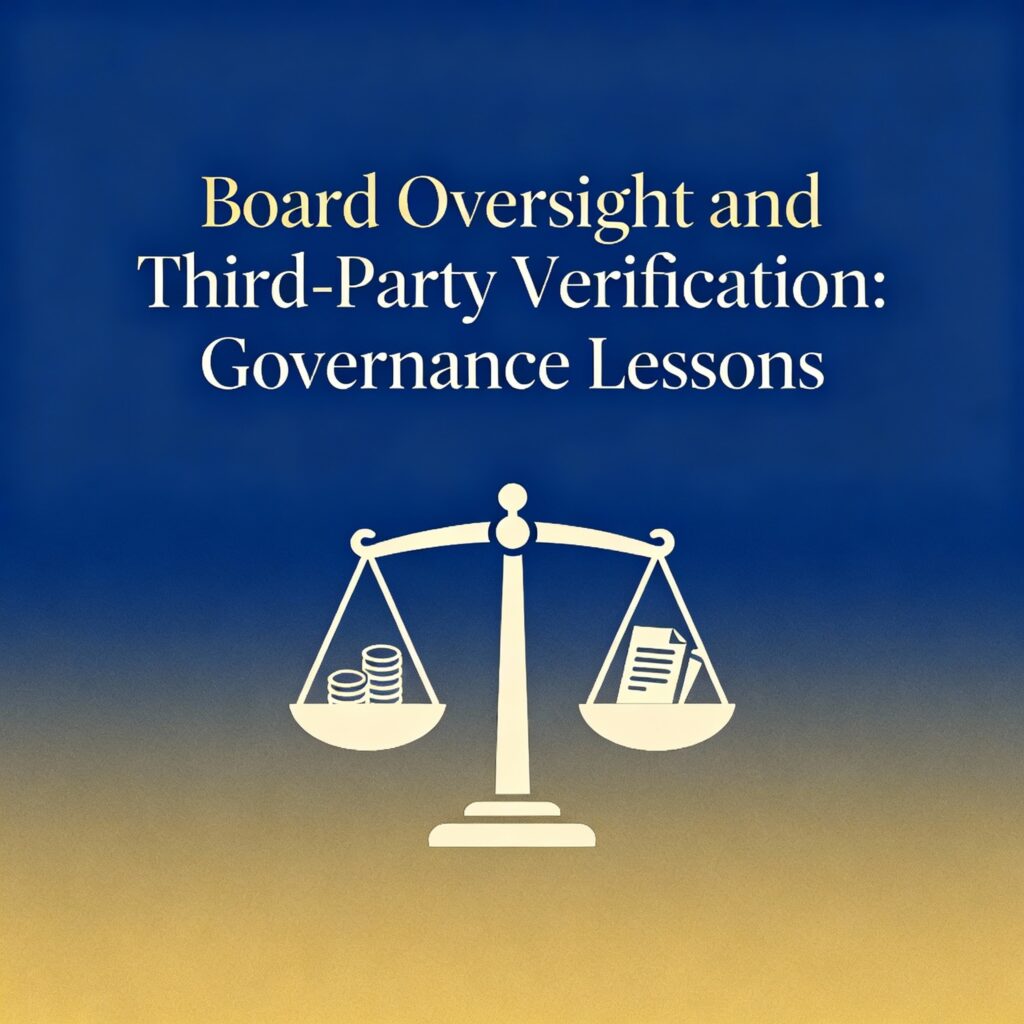The recent Chase case and the high-profile Charlie Javice / Frank acquisition highlight how even large, sophisticated organizations can face unexpected risks when third-party relationships fail. These same verification failures that cost institutions millions mirror the everyday investor’s challenge—balancing trust and diligence.
What Happened
Chase engaged a third-party validator—reported to be Acxiom—to confirm user data supplied by Frank, a college financial-aid startup. The validator’s task was to verify the number of unique customer accounts without accessing personally identifiable information. However, the data supplied by Frank was largely fabricated, allowing the validator to produce a report that overstated user numbers.
This, in turn, led to the acquisition moving forward under false assumptions, exposing Chase to operational, financial, and reputational risk. While the individual misconduct of Javice was central, the case also revealed gaps in board oversight, management due diligence, and internal control processes.
Governance Lessons from the Chase / Javice Case
From a governance perspective, the key takeaway is clear: trust is necessary but not sufficient. Organizations must actively verify critical operations, especially when relying on third parties. Hindsight may make solutions obvious, but stronger verification, active oversight, and robust internal controls could have mitigated the risk.
Practical board-level lessons include:
- Verify vendor credentials, track record, and processes.
- Use independent audits or sample testing to confirm data accuracy.
- Require management to report periodically on vendor performance and anomalies.
- Ask hard questions about verification scope, escalation protocols, and risk exposure.
- Implement dual verification or redundant processes for mission-critical tasks.
- Ensure escalation paths for anomalies are clearly defined and tested.
- Inform stakeholders promptly of failures or irregularities.
- Document lessons learned and corrective measures.
- Conduct post-mortem analysis after incidents.
- Update policies, contracts, and vendor engagement strategies based on findings.
Who Checks the Checkers: Board vs. Management Roles
A practical governance question often arises: should boards check vendors directly? The answer lies in the balance of responsibilities:
Management executes the actual verification, audits, and daily oversight.
Boards oversee that management is performing these duties effectively, reviewing reports, audits, and risk exposure.
Critical principle: boards don’t “do the checking,” but they ensure that checking is done thoroughly and ask for evidence, not just assurances.
Investor Parallels: Applying Governance Wisdom Personally
While boards handle millions or billions in transactions, the principle applies to individuals as well. Many people already practice light due diligence, such as reading product reviews. But when stakes are high, deeper verification is essential:
- Buying a home: property inspections, title searches, and neighborhood checks.
- Purchasing a used car: trusted mechanic inspections and vehicle history reports.
- Making financial commitments: understanding fees, lock-up periods, and counterparty risk.
The larger the commitment, the more thorough the due diligence must be. Boards fail when they treat third-party verification as a check-the-box exercise; individuals fail when they treat life-changing purchases with the same casual diligence they apply to minor purchases.
Reflection
Strong governance is proactive, not reactive. Mistakes happen, people make errors, and even sophisticated systems have vulnerabilities. But organizations that anticipate weaknesses, enforce controls, and provide boards with clear oversight tools are far more resilient.
For me, these cases are a reminder that boards are not passive observers. They must ask hard questions, demand evidence of proper controls, and safeguard both capital and reputation. Trust is essential—but accountability and verification are non-negotiable.
Key Takeaway
Whether protecting corporate shareholders or personal savings, the mindset is identical: verify before you trust. Trust alone is never enough. Verification, oversight, and proactive risk management are essential to prevent failures and protect stakeholders—whether millions in assets or your next major purchase.

